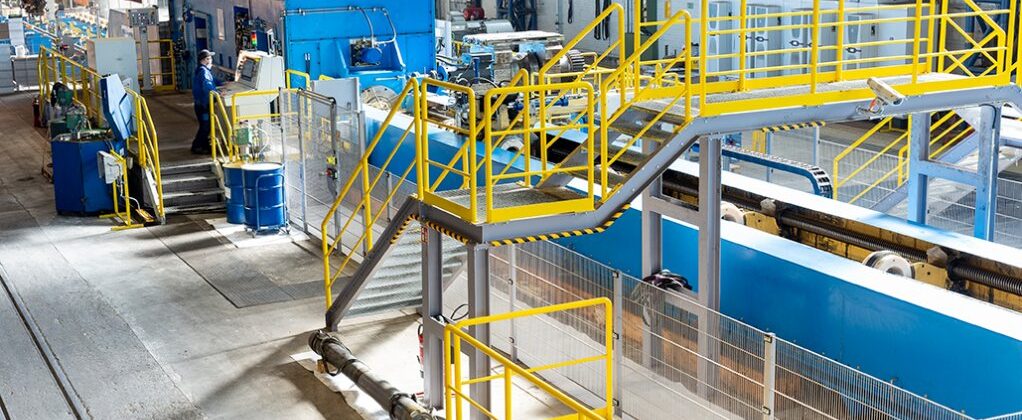by Flextra Engineered Products 0 comment
Converter Steelworks plants beneficial
With a focus on future-orientated stainless steelmaking, metallurgical industry plant supplier SMS group offers converter steel plants for carbon and stainless steel worldwide.
This includes complex Basic Oxygen Furnace and Argon Oxygen Decarburisation converter steel plants with a higher degree of automation and digitalisation.
Key features of the converter steel plants include high productivity, low inert gas consumption, low reduction material consumption and shorter process times.
The SMS group tailors plants according to individual plant requirements by considering the availability of raw materials, infrastructure and energy supply, thereby enabling clients to produce high-quality materials at a lower conversion rate per ton of stainless steel produced.
The company also offers its hydraulic clamping device as a converter vessel held in the trunnion ring by three clamping elements. Vessel pins, which are welded to the vessel shell, are mounted in support brackets attached to the trunnion ring.
The clamping device is an automated system that allows for thermal expansion of the vessel in the trunnion ring and is mechanically secured against unintentional openings.
“The solutions are durable and sustainably reduce maintenance costs. Tailor-made maintenance procedures, customer-specific training programmes and effective spare parts management round off the range of services. Service packages tailored to the customer’s requirements are available worldwide,” says SMS group South Africa MD Pieter Bezuidenhout.
The SMS group also offers its cold pilger technology for the forming of high-quality seamless tubes.
Cold pilgering is a rolling process for many different materials, such as stainless steel, low-alloy steels, zircaloy, copper and titanium alloys, in which the diameter and wall thickness of metal tubes are reduced. The process involves a large number of forming steps to improve the tubes’ roundness, stresses, homogeneity and surface roughness.
Inside the tube is a stationary mandrel which tapers in the rolling direction. This is attached to a long mandrel bar, which is secured in, and rotated by, a thrust block. Two dies form the tubular stock and are mounted in a reciprocating saddle.
The drive pinions mesh with two stationary racks, allowing the dies to rotate back and forth in synchronisation with the reciprocating saddle. The saddle, in turn, is moved back and forth by a crank drive.
Cold pilgered tubes are used in the medical, chemical, aviation, food and automotive industries, as well as for oil-based tubular goods, pure gas applications and for refrigerators and heat exchangers.
“The tubes are formed by a special cold forming process. This reduces the diameter and wall thickness and, at the same time, achieves the closest outer diameter and wall-thickness tolerances,” Bezuidenhout enthuses.
The group’s product portfolio features tool grinding machines for dressing dies, tailored to the cold pilger rolling process.
The die groove grinding machine GG 52 computer numerical control (CNC) is known for its reliability and high degree of precision – owing to the five-axes design, the machine measuring system and CNC control.
Additionally, the SMS group offers its HD mould slab quality control technology that makes high-resolution data available and provides insights into the processes inside the mould.
Unlike traditional solutions with limited measuring points, this system allows customers to place measuring points across the entire surface to monitor key areas, such as the mould level, in greater detail, thereby enabling customers to boost product quality.
Benefits of the HD mould include in-depth insight into the solidification process, more reliable sticker detection, increased steel in mould time, better slab quality, and it is completely maintenance-free.

